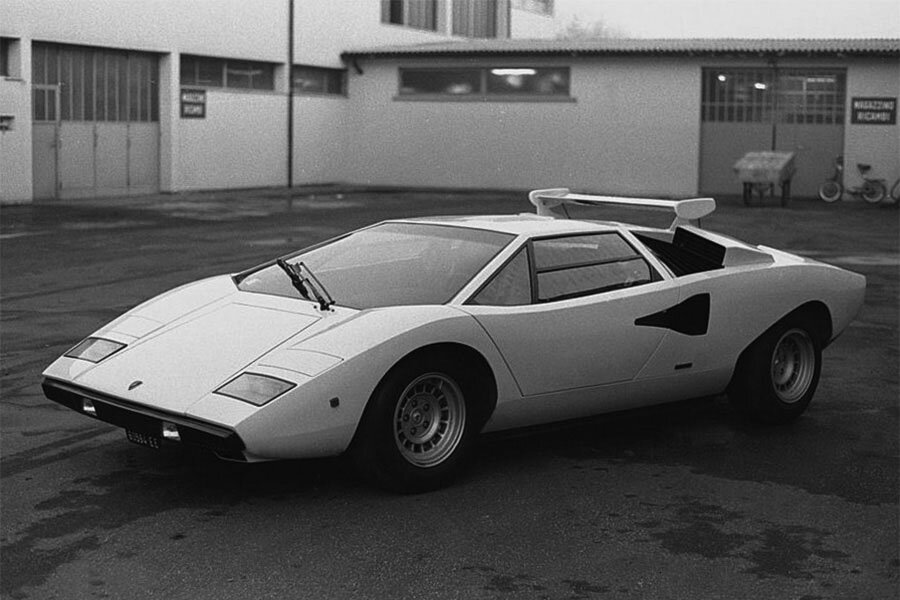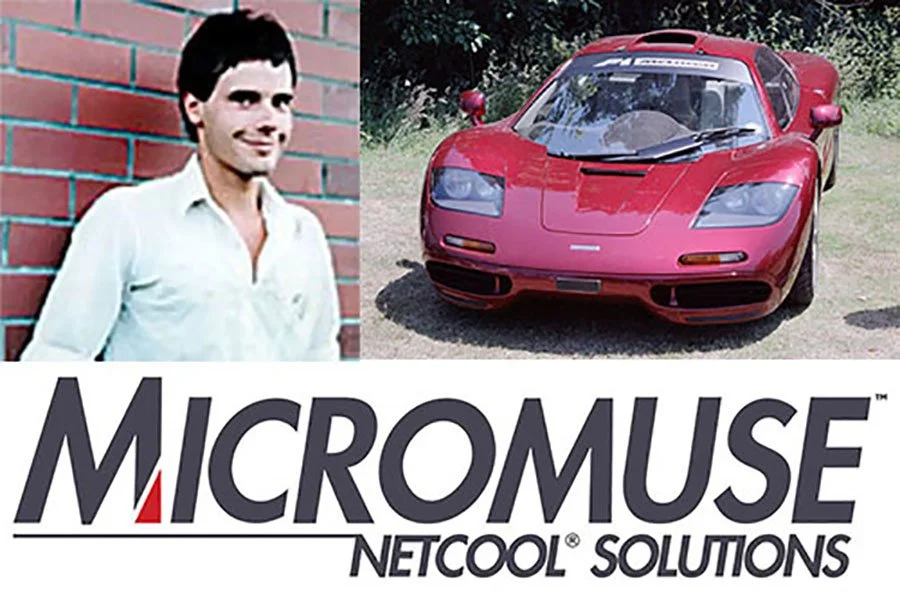Bio: Walter Wolf
/During the 1970s, Walter Wolf made a fortune trading oil cargoes and providing technical services to the oil industry.
Born in Graz on October 5th 1939 to Austrian-Slovenien parents, Wolf spent his childhood in Slovenia and Yugoslavia before leaving for West Germany after his father returned from a Soviet military internment camp in 1955.
Wolf worked as an apprentice aeroplane mechanic in Germany before moving to Canada in 1960 where he became a naturalised citizen. Wolf ended up in Ottowa where he took a job with KD Marine as a diver installing intake pipes and building bridge foundations.
KD Marine was soon on the verge of bankruptcy but Wolf recognised its relevance to the offshore oil industry. A bank loan enabled him to buy a significant stake in the company.
A rapid period of growth followed; Wolf secured lucrative international service contracts that allowed him to expand into buying and selling crude oil cargoes.
During the early seventies, Wolf became a very rich man, but the subsequent energy crisis of 1973 to 1975 netted him vast wealth.
On October 17th 1973, the Arab OPEC members announced an embargo on oil sales to the USA, UK, Canada, Japan and the Netherlands. The embargo was in response to the USA's support for Israel in the Yom Kippur War where Egypt and Syria (with the support of other Arab nations) had begun a military campaign aimed at regaining Arab territories lost to Israel during the 1967 Six Day War.
Within a short time, the price of oil had jumped more than 400%. It continued to rise inexorably even after the embargo was lifted on March 17th 1974 following the withdrawal of the last Israeli troops.
This led to a massive expansion in offshore oil exploration by western petro companies backed by large government subsidies.
Wolf's international connections across the Arabian Gulf and Africa allowed him to make a killing in oil cargoes, as did his exploration and extraction services in the North Sea.
Wolf began to spend more time in Europe where a passion for fast cars led him to create his own race-winning Formula 1 team. He also commissioned a series of renowned Lamborghini hot rods.
In June 1974, Wolf was the first customer to receive a Countach LP400 (chassis 1120006). It was painted white with a black interior and featured a unique roof-mounted aerofoil.
Although the Lamborghini Miura had been out of production since 1973, Wolf convinced the factory to carry out a ground up rebuild on an SV for his wife. In April 1975, the Wolfs took delivery of the last example dispatched from the the factory as a new car (chassis 5092).
The yellow Miura was followed by a very special Countach LP400, one of three Wolf had developed by Dallara Automobili (chassis 1120148).
The red Countach was re-engineered with parallel link suspension and wider Campagnolo wheels. The car’s new teledial rims were shod with state-of-the-art Pirelli P7 tyres that had been manufactured specially for this application.
Chassis 1120148 was also fitted with a tuned five-litre engine, adjustable rear wing and black front spoiler with matching wheelarch extensions. The Countach was delivered in mid 1975, after which it was further accessorised with Willans harnesses, a Personal F1 steering wheel and fire extinguisher.
Meanwhile, since the end of the 1974 season (when backing from Iso and Marlboro had disappeared), Frank Williams Racing Cars had struggled without a major sponsor. By 1975, the team was near collapse.
Having become something of a personality in the F1 paddock, Wolf agreed to purchase Cosworth DFV engines for Frank Williams. At the end of 1975, Wolf acquired a 60% stake in the team.
The Hesketh operation was disbanded soon after and their star driver, James Hunt, left for McLaren. Wolf purchased the Hesketh team assets including the 1975 308C cars and also recruited several key Hesketh staff to include highly rated designer, Harvery Postelthwaite.
Unfortunately, results for the new Wolf-liveried Williams FW05s in 1976 were disappointing; the two-car team had scored four top ten finishes but no points by mid-season. Number one driver, Jacky Ickx, departed and was replaced by Arturo Merzario who failed to finish any of the remaining races.
Unhappy with the Williams arrangement, Wolf established Walter Wolf Racing as an independent team on July 5th 1976. He began making arrangements for a car bearing his own name to compete in 1977.
Wolf collected the second of his Dallara-engineered Lamborghini Countach Speciales in 1976 (chassis 1120202). This latest example was modified in much the same was as his first, albeit with a few little extras. They included an electronically adjustable rear wing, body coloured aero mirrors and a public address system. The new car was also fitted with the trick five-litre engine originally used in his red example.
1120202 was painted Bugatti blue with gold pin-striping and matching teledial wheels. Other accessories included Willans harnesses, a Walter Wolf Racing emblem on the tail fascia and Canadian flags on each retractable headlight.
For the 1977 season, Wolf and Williams parted company as expected. Frank Williams established Williams Grand Prix Engineering with Patrick Head and the existing operation became Walter Wolf Racing. Ex-Lotus team manager, Peter Warr, ran the show and Harvery Postelthwaite designed an all-new machine called the Wolf WR1.
The single-car outfit’s 1977 campaign would prove a remarkable success.
Jody Scheckter was hired from Tyrrell and won on Wolf's F1 debut at the Argentine Grand Prix.
Further victories followed in Italy and Canada. Ten podium finishes during the 16-race season landed Scheckter second place in the World Championship for Drivers.
Wolf also commissioned Dallara to produce a Group 7 car for the 1977 Can-Am championship. However, while the resultant WD1's record of qualifying in the top six for each of its five races suggested the speed was there, reliability proved its achilles heel.
The WD1’s best result was third at Road America. Chris Amon did the first race with Gilles Villeneuve taking over thereafter.
Although there was to be no 1978 Can-Am programme, Dallara did build Wolf an F3 car for Bobby Rahal to race.
After it was displayed at the Geneva Motor Show in March 1978, Wolf took delivery of the first Lamborghini Countach S. The S was a production version of the widebody Countach hot rods Wolf had bankrolled the development of. His largesse had probably saved Lamborghini from going out of business during the mid-to-late 1970s as the firm lurched from one financial crisis to another.
Cosmetically, Wolf’s latest Countach (chassis 1121002) was dark blue with gold wheels and accents. It was subsequently uprated by Dallara with Lockheed eight piston caliper brakes, an enlarged 4.8-litre engine, a Borg & Beck racing clutch, a quick steering rack and cockpit adjustable brake balance control.
Further modifications were carried out in April 1982 when the interior was reworked by the BB tuning company in Frankfurt.
BB installed a DINFOS digital dash and several other advanced electronic systems.
As for Wolf’s racing team, it began the 1978 F1 season with the WR1 until the ground-effect WR5 appeared at the Belgian Grand Prix in June. This was superseded by the WR6 towards the end of the year and, although there were no wins in 1978, the team achieved consistent points finishes including four podiums with second place finishes in Canada and Germany and thirds in the USA and Spain.
Scheckter ended up seventh in the Drivers’ Championship and left for Ferrari.
To replace Scheckter, Wolf signed 1976 World Champion, James Hunt. However, the new WR7 was off the pace. Hunt quit after the 1979 Monaco Grand Prix at which point Keke Rosberg was recruited.
Although it qualified in the top ten five times, the WR7 managed only two finishes and scored no points all season.
Wolf sold his team to Emerson Fittipaldi at the end of 1979.
This brought to a close one of the brightest chapters in privateer Formula 1 racing.
Wolf took delivery of another custom-made sports car in 1979. He had commissioned the Kremer racing team in Germany to build him a street version of their 1979 Le Mans-winning Porsche 935 K3 (chassis 000 00018).
The K3 was equipped with a 740bhp twin turbocharged engine, soundproofed leather interior and electric windows. Wolf’s had the K3 painted his traditional racing colours of dark blue and gold.
Upon completion, the Porsche was probably the fastest road car in the world. It would be the last of Walter Wolf’s legendary custom supercars.
In addition to F1, Wolf was also an avid motorcycle fan. After Wolf-backed Suzuki RG500s were raced successfully in Canada and Japan, several hundred special edition replicas were produced between 1986 and 1987.
Walter Wolf’s custom cars
1974 Lamborghini Countach LP400 chassis 1120006
1975 Lamborghini Miura P400 SV chassis 5092
1975 Lamborghini Countach LP400 Speciale chassis 1120148
1976 Lamborghini Countach LP400 Speciale chassis 1120202
1978 Lamborghini Countach LP400 S chassis 1121002
1979 Kremer K3 chassis 000 00018
Text copyright: Supercar Nostalgia
Photo copyright: unattributed, Supercar Nostalgia & Lamborghini - https://www.lamborghini.com

























